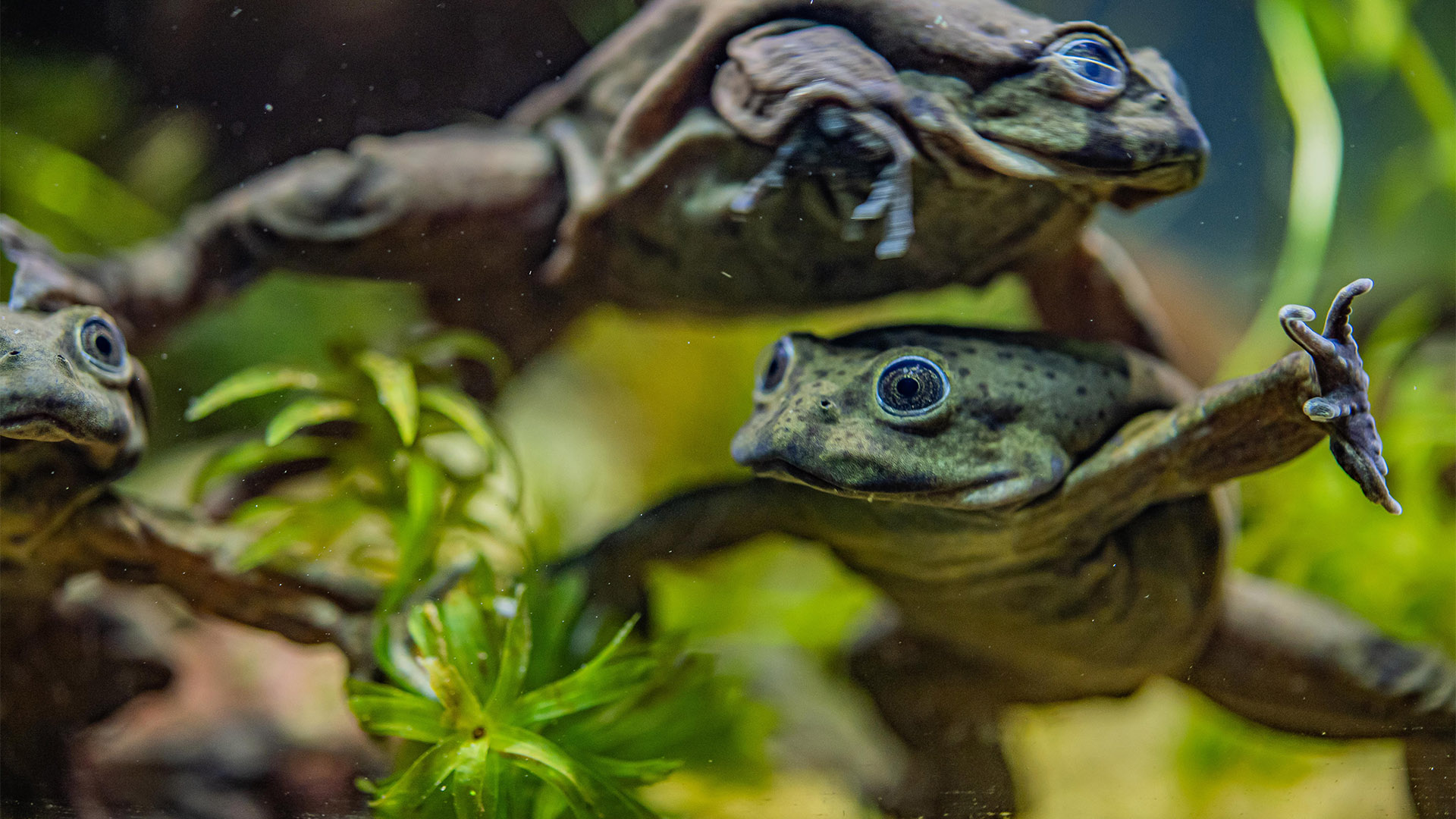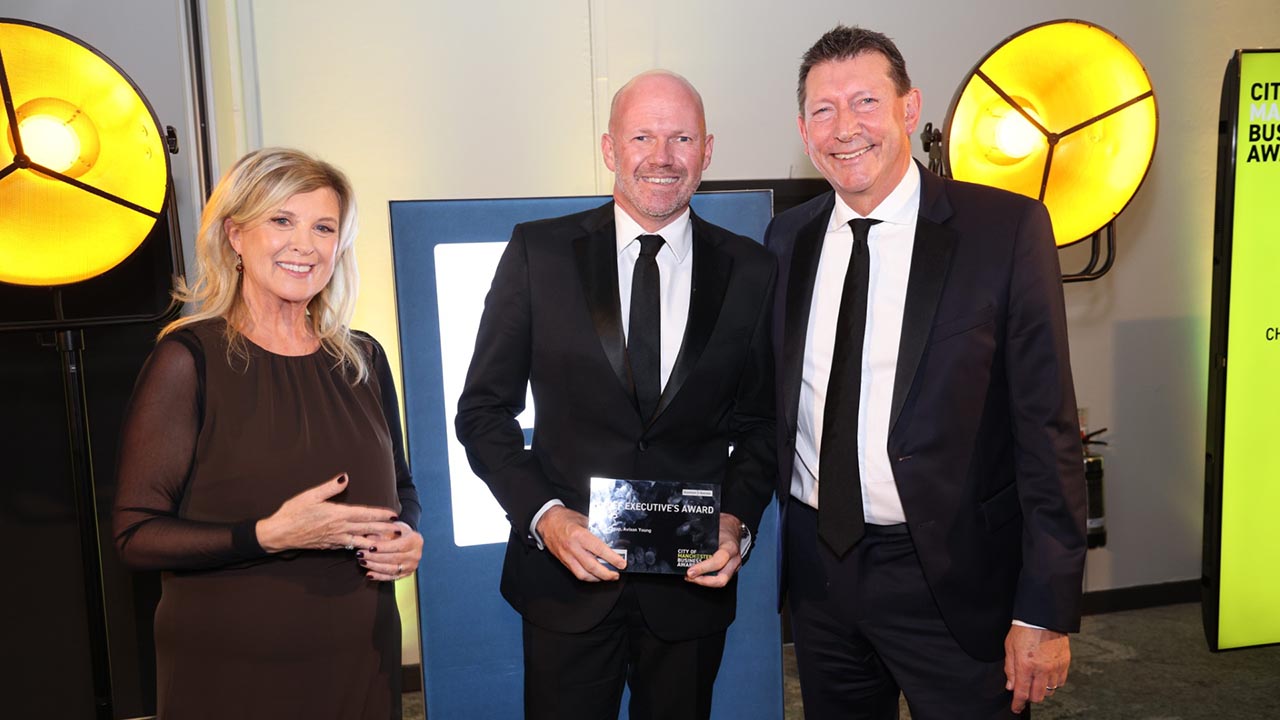An endangered frog from South America with a rather unfortunate nickname has gone on display at Chester Zoo for the first time.
The Lake Titicaca frog – named after the lake its naturally found in which straddles the border of Bolivia and Peru at around 12,500 feet above sea level – is the world’s largest aquatic frog. It spends most its life at the bottom of the lake, absorbing oxygen from the water using its saggy folds of excessive skin – a trait that has previously seen it labelled the ‘scrotum frog’.
Twenty of the rare amphibians are now being cared for at Chester Zoo, where experts are studying their behaviour to try to gather new insights as part of the latest conservation efforts for the species.
The zoo was the first in Europe to give a home to the species and has now established a European population by sending 130 other frogs to 13 other leading, progressive zoos around the continent to help prevent total extinction of the frog.
A combination of pollution, habitat loss and hunting has devastated the frog’s wild population. They are listed as endangered by the International Union for the Conservation of Nature (IUCN), with between 50% – 80% estimated as having been lost from Lake Titicaca in the last 20 years alone.
In response, nearby researchers set up a rescue centre and began attempts to breed the frogs, before seeking assistance from conservationists at Denver Zoo in America and now, Chester Zoo in the UK.
Meanwhile, Chester Zoo has also formed an alliance with the Cayetano Heredia University in Peru and the Natural History Museum’s Alcide d’Orbigny in Bolivia in a ground-breaking union which is fighting to save the Lake Titicaca frog from extinction.
The two South American institutions are part of a binational action plan for the conservation of the species – the first time the two countries have come together to attempt to protect the frogs. The plan of the two organisations is focused on securing the future of the lake by promoting sustainable activities for local communities, recovering the habitat and managing the wild frog population.
Dr Gerardo Garcia, the zoo’s Curator of Lower Vertebrates and Invertebrates, said:
“To be responsible for setting up the first ever conservation breeding programme in Europe for these fascinating frogs is a real honour for us here at Chester Zoo. We’re very happy that we can now share our efforts to protect these frogs with the wider public, who will most likely be seeing them for the very first time during their visit the zoo. What we need to do now is to build on our knowledge of the species and its biology – by learning all about their life cycle, mating behaviours, favoured habitat and ability to tolerate or resist a deadly fungus that is wiping out lots of amphibians, called chytrid. We can then harness that valuable information for conservation action in the wild.
“These frogs are also important ambassadors for their species and will help us to raise more awareness of their plight in the wild. Lake Titicaca frogs are highly threatened with extinction. The one, high montane lake that they live in is an extremely fragile environment and they have really suffered at the hands of pollution and introduced fish species. It’s illegal to harvest these frogs but Peruvian and Bolivian locals are still known to do so – they use them in smoothies, which they believe enhances virility and energy.
“The planet is facing its biggest ever biodiversity extinction, with thousands of amphibian species at risk of being lost forever. Human activity is very much part of the problem, but we won’t sit back and let them become extinct because we’re also key to the solutions and will play a vital role in reversing the damage. We want to make sure the Lake Titicaca frog is around for generations to come.”
Roberto Elias Piperis, Coordinator of the wildlife laboratory at the Cayetano Heredia University in Peru, added:
“This species is unique. It is only found in Lake Titicaca and the surrounding areas where it is adapted to the very adverse conditions there. The lake is at extremely high altitude, nearly four times as high as the summit of Mount Snowdon in Wales and, in addition to its ecological importance, there is also a cultural one, because the local inhabitants consider the frogs as a connection between them and the gods, so they use them in rituals to call rain. That adds to the fact that the Puno Region, where the lake is located, has named it as a species of regional interest since 2013.”
Teresa Camacho Badani, Chief of the herpetology department at the Natural History Museum’s Alcide d’Orbigny in Cochabamba in Bolivia, and in charge of the K’ayra Centre, where around 200 Titicaca water frogs live as part of the breeding programme, continued:
“Work has been ongoing for several years in both Bolivia and Peru to conserve the Titicaca water frog. This though was taking place in each country independently and the two countries joining up their efforts had not been possible until now.
“We know that the work will not be easy, but together we want to make a real effort to conserve this critically endangered species and for this we must work as a team. This has coincided with the arrival of frogs in Europe and we are happy that this incredible species is now at Chester Zoo and elsewhere. Now that we have ambassadors there, along with a great commitment to conservation, I truly believe that we are living in one of the best moments to save this species from extinction.”
Lake Titicaca water frog facts
- It’s the first time the species has gone on show to public at Chester Zoo
- Lake Titicaca frogs can grow up to 20 inches (50cm) long and weigh almost a kilogram
- They are completely aquatic frogs and have large, flat heads
- Due to a lack of oxygen in their environment, their lungs are less than one-third of the size that would be expected for a frog of its size
- They breathe primarily through their skin which features many large folds. The folds essentially serve as gills
The species has the lowest reported metabolic rate of any frog









